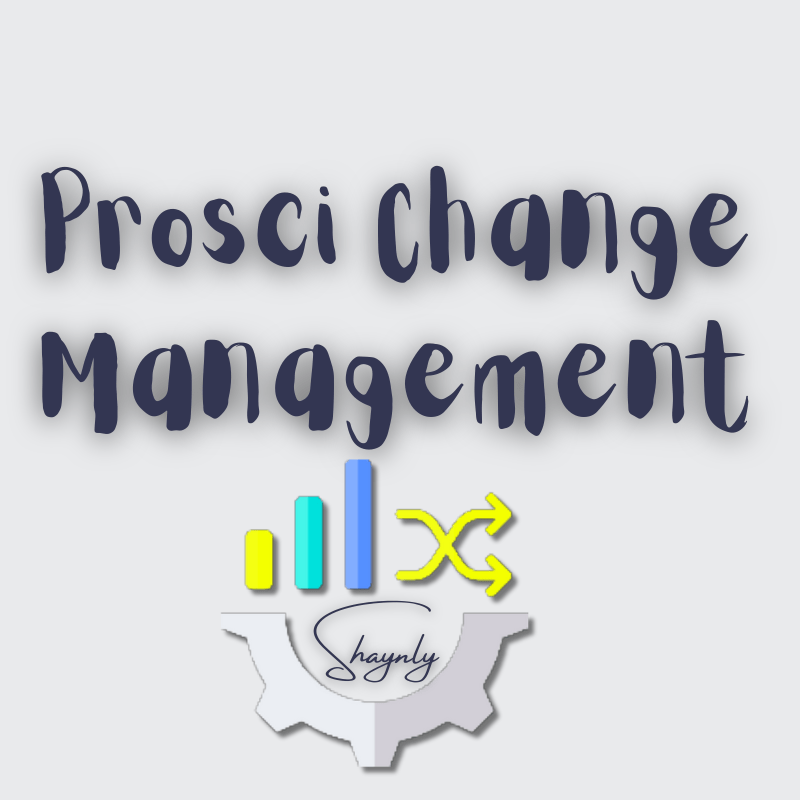Table of Contents
Introduction
Change is a constant in the business world, and organizations that can effectively manage it often emerge as industry leaders. Prosci Change Management, a methodology rooted in understanding and addressing the human side of change, has gained prominence for its practical approach. In this article, we'll delve into the intricacies of Prosci Change Management, exploring its principles, processes, and real-world applications.
Understanding Prosci Change Management
Prosci Change Management revolves around the ADKAR Model, emphasizing the stages of Awareness, Desire, Knowledge, Ability, and Reinforcement. At its core, it recognizes that successful change requires more than just new processes; it demands a cultural shift within an organization.
Key Components of Prosci Change Management
Leadership alignment, employee engagement, and effective communication stand out as crucial components. A synchronized leadership team ensures that everyone is on the same page, while engaged employees become advocates for change. Clear and consistent communication, tailored to different audiences, fosters understanding and buy-in.
The Prosci Change Management Process
The process involves assessment, preparation, strategy development, implementation, and evaluation. Rigorous assessment identifies potential obstacles, preparation lays the groundwork, and strategy development charts the course. Implementation brings the plan to life, and evaluation ensures continuous improvement and reinforcement.
Benefits of Prosci Change Management
Organizations embracing Prosci Change Management report increased project success rates, improved morale, and heightened productivity. The approach fosters resilience, enabling companies to adapt more effectively to the ever-evolving business landscape.
Examining successful applications of Prosci Change Management provides valuable insights. Case studies showcase the methodology in action, demonstrating its adaptability to diverse industries and organizational sizes.
Common Challenges and Solutions
Resistance to change is a universal challenge. Identifying and addressing resistance early on, along with adapting to unforeseen hurdles, are integral aspects of successful change initiatives. A commitment to continuous improvement further solidifies the methodology's effectiveness.
Prosci vs. Other Change Management Approaches
Comparing Prosci with traditional change management approaches reveals nuanced differences. While traditional methods may focus more on processes, Prosci prioritizes people, recognizing that their involvement is key to successful change.
Training and Certification in Prosci
Professionals and organizations seeking to enhance their change management capabilities can benefit from Prosci's training and certification programs. These programs offer in-depth knowledge and practical skills, contributing to the successful implementation of change initiatives.
Future Trends in Change Management
As the business landscape evolves, so do change management approaches. Integrating technology and data analytics is becoming more prevalent, allowing organizations to make informed decisions and adapt more quickly to change.
The Human Element in Change Management
Acknowledging and addressing the emotional reactions to change is crucial. Building a culture of change resilience fosters an environment where employees feel empowered rather than overwhelmed by transformations.
Prosci Change Management in Small Businesses
While often associated with large corporations, Prosci Change Management is adaptable to small businesses. Tailoring the approach to fit the size and structure of the organization has led to successful implementations and positive outcomes.
Measuring Success in Change Management
Key performance indicators (KPIs) and continuous improvement metrics serve as benchmarks for success. Regularly evaluating and adjusting the change management strategy ensures its ongoing effectiveness.
Insights from a seasoned Prosci practitioner provide practical tips and advice for those navigating organizational change. Real-world experiences shed light on the challenges and triumphs of implementing Prosci Change Management.
Conclusion
In conclusion, Prosci Change Management stands as a holistic approach to navigating organizational transformations. By prioritizing the human element, engaging leadership, and fostering effective communication, organizations can not only weather change but thrive in it. Embracing the principles of Prosci Change Management sets the stage for success in an ever-changing business landscape.
FAQs
Is Prosci Change Management only for large corporations?
Prosci Change Management is adaptable to organizations of all sizes, including small businesses.
How can Prosci certification benefit professionals?
Prosci certification provides professionals with in-depth knowledge and practical skills for effective change management.
What role does leadership play in Prosci Change Management?
Leadership alignment is crucial for the success of Prosci Change Management, ensuring a unified approach to change initiatives.
Can Prosci Change Management be applied to non-profit organizations?
Yes, Prosci Change Management principles can be applied to non-profit organizations seeking to navigate change successfully.
How often should organizations reassess their change management strategy?
Regular reassessment is recommended to ensure that the change management strategy remains effective in dynamic business environments.
Discover more from Shaynly
Subscribe to get the latest posts sent to your email.
